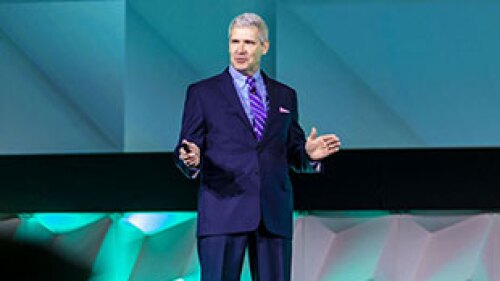- The U.S. will have to build new cities to accommodate 74.3 million more homes needed over the next 40 years.
- Some of the new cities may have to go where existing suburban development is now.
- New cities should be designed with major arteries dedicated to pedestrians and bicycles, plus arteries dedicated to bus rapid-transit -- not for cars.
- Government has a central role to play in creating such cities. It should not be left to market forces alone.
Imagine a new city as if you had a magic wand and could create a place that makes its residents happy. That was the challenge Enrique Peñalosa, president of the Institute for Transportation and Development Policy, presented to ULI members attending the Fall Meeting in Denver.
The United States will need to create brand-new cities to provide the 74.3 million new homes needed by a population expected to surge over the next 40 years, said Peñalosa, former mayor of Bogotá, Colombia. Creating dense new cities that are desirable alternatives to the suburbs will require designs that focus on parks, green spaces, and public transportation—and not on automobile access, Peñalosa said. The streets should be pedestrian-dominant and literally safe enough for children to play there, as they were before the introduction of the automobile in the early 20th century. All the streets in cities were made for people for 5,000 years, he said.
Existing development, even some existing residential suburbs, may need to be demolished to make way for such new cities, Peñalosa said, noting that a bold rethinking could require massive government intervention. These are democratic ideals, he stressed.
The U.S. has to be the model for the world, he said. If you can create the more sustainable and more fun city, that will be an example for the world, he said.


